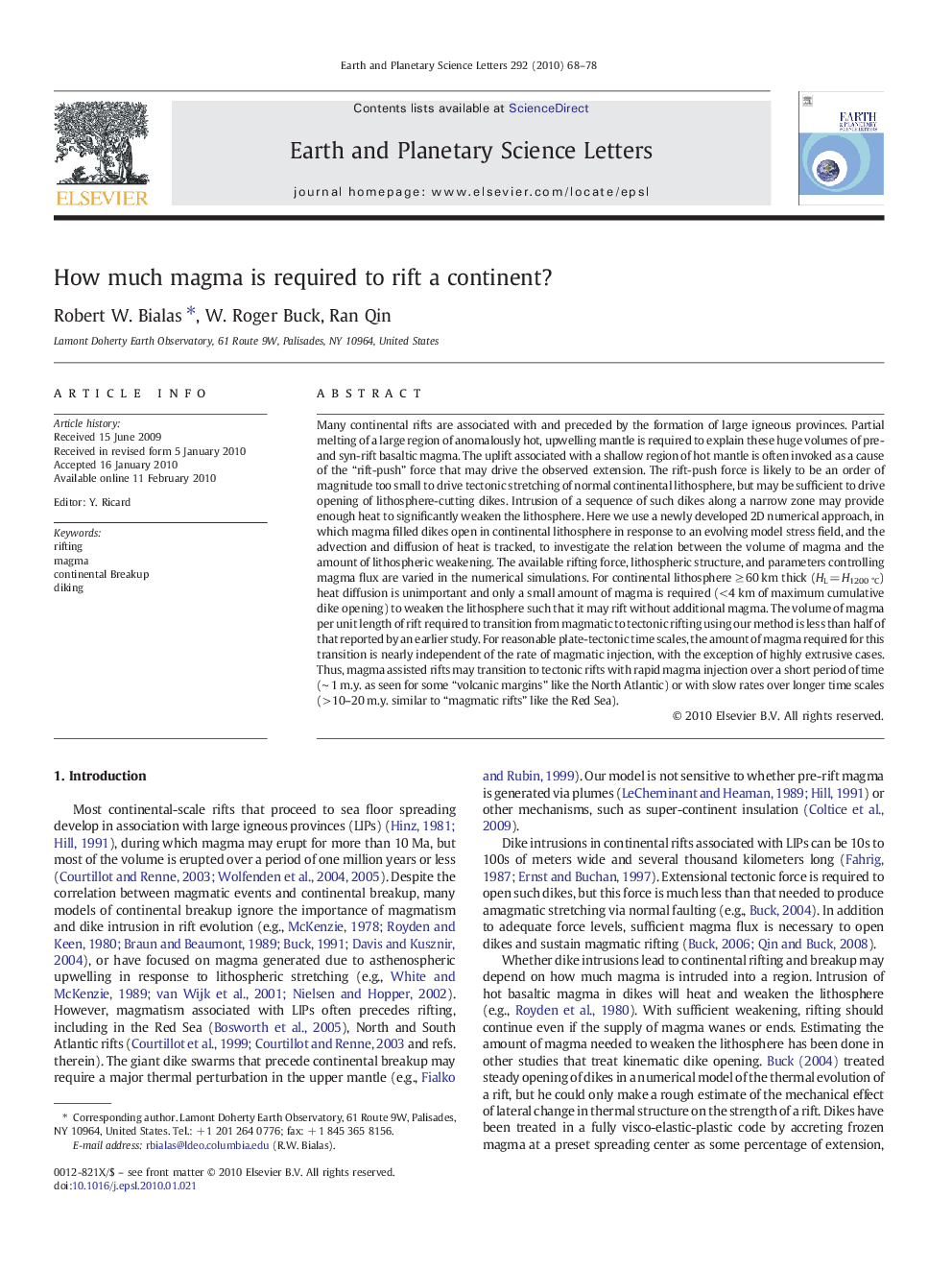| کد مقاله | کد نشریه | سال انتشار | مقاله انگلیسی | نسخه تمام متن |
|---|---|---|---|---|
| 4678634 | 1634856 | 2010 | 11 صفحه PDF | دانلود رایگان |

Many continental rifts are associated with and preceded by the formation of large igneous provinces. Partial melting of a large region of anomalously hot, upwelling mantle is required to explain these huge volumes of pre- and syn-rift basaltic magma. The uplift associated with a shallow region of hot mantle is often invoked as a cause of the “rift-push” force that may drive the observed extension. The rift-push force is likely to be an order of magnitude too small to drive tectonic stretching of normal continental lithosphere, but may be sufficient to drive opening of lithosphere-cutting dikes. Intrusion of a sequence of such dikes along a narrow zone may provide enough heat to significantly weaken the lithosphere. Here we use a newly developed 2D numerical approach, in which magma filled dikes open in continental lithosphere in response to an evolving model stress field, and the advection and diffusion of heat is tracked, to investigate the relation between the volume of magma and the amount of lithospheric weakening. The available rifting force, lithospheric structure, and parameters controlling magma flux are varied in the numerical simulations. For continental lithosphere ≥ 60 km thick (HL = H1200 °C) heat diffusion is unimportant and only a small amount of magma is required (< 4 km of maximum cumulative dike opening) to weaken the lithosphere such that it may rift without additional magma. The volume of magma per unit length of rift required to transition from magmatic to tectonic rifting using our method is less than half of that reported by an earlier study. For reasonable plate-tectonic time scales, the amount of magma required for this transition is nearly independent of the rate of magmatic injection, with the exception of highly extrusive cases. Thus, magma assisted rifts may transition to tectonic rifts with rapid magma injection over a short period of time (∼ 1 m.y. as seen for some “volcanic margins” like the North Atlantic) or with slow rates over longer time scales (> 10–20 m.y. similar to “magmatic rifts” like the Red Sea).
Journal: Earth and Planetary Science Letters - Volume 292, Issues 1–2, 15 March 2010, Pages 68–78